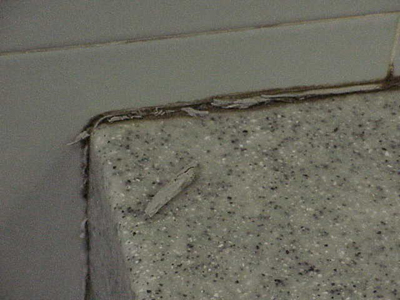Sealant
Navigation
Defect and Repair
|
Sealants |
Defect |
Repair |
|
Mould/Fungus Growth Caused by water accumulation (in troughs), blockage (behind bulges) and capillary action (through cracks).
The dirt which collects consists of organic materials. i.e. traces of shampoo and soap, skin flakes, fats etc, and offers a rich feeding ground or mould. |
It is usually sufficient to treat the affected area with the special anti-fungus sprays available on the market. These sprays are based on chlorine bleaching solution, a concentrated version of the “Javelle Water”. | |
|
Natural Stone |
Adhesion failure The loss of bond between the sealant and substrate
|
|
 |
Cohesive & adhesive failure
|
|
 |
Sealant debounding | To take off the affected area and reapply |
|
Backer rod outgassing (Bubbling) Internal Pressure within the closed cell backer rod is released during backer rod installation due to puncturing. Sealant immediately applied will show bubbles and poor aesthetics.
|
|
Note: For more defects, please refer to the Defect Library.
